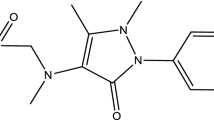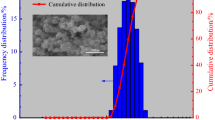Abstract
The dinitramide salts of ammonia (ADN), hexamethylenetetramine (HDN), potassium (KDN), and sodium (NaDN) showed a linear relationship between the DSC rate of decomposition at the peak maximum and the DEA tanδ value at the low temperature transition peak. As the cation basicity increased in the series ADN<HDN<KDN<NaDN, there was an increase in the low temperature transition peak, the energy barrier for relaxation, and the decomposition peak temperature, and a decrease in the tanδ value at the low temperature transition peak, specific heat capacity, and the rate and enthalpy of decomposition. The more basic salts were more thermally stable (i.e., higher decomposition temperature) and less energetic (i.e., lower enthalpy of decomposition). The more internal free volume (disorder) present in these salts, the higher the rates of relaxation and decomposition. Five aluminum powders of different surface areas were analyzed by DSC in platinum sample pans, and it was found that the enthalpy and rate of oxidation increased as the particle size of Al decreased while the enthalpy of the Al melt decreased. TG showed a two-step weight gain in the oxidation of Al with plateaus in the 650 and 1130°C regions and the percent weight gain increased as the particle size of Al decreased. Variable DSC and TG heating rate studies showed that the activation energies for the first step in the oxidation process increased as the particle size of Al increased.
Similar content being viewed by others
References
S. Borman, Chem. Engin. News, Jan. 17 (1994) 18.
R. Gilardi, Naval Research Laboratory, unpublished data.
R. A. Venditti, J. K. Gillham, Y. C. Jean and Y. Lou, J. Appl. Polym. Sci., 56 (1995) 1207.
Z. Pak, AIAA-93-1755, AIAA/SAE/ASME/ASEE 29th Joint Propulsion Conference and Exhibit, 28–30 June 1993, Monterey, CA.
V. A. Tartakovsky and O. A. Lukyanov, 25th International Annual Conference of ICT, 28 June–1 July 1994, Karlsruhe Federal Republic of Germany.
W. Koppes, M. Sitzmann, A. Stern, R. Boswell and A. Tompa, Explosives and Propellant Subgroup Meeting at ARDEC, Picatinny Arsenal, NJ, 7–8 Nov. 1995.
J. H. Flynn and L. A. Wall, Polym. Letters, 4 (1966) 323.
P. D. Garn, J. Thermal Anal., 10 (1976) 99.
N. Koga and J. Šesták, Thermochim. Acta, 182 (1991) 208.
ANSI/ASTM E6889-79.
Author information
Authors and Affiliations
Additional information
The authors are grateful to Dr. William Koppes, Mr. Michael Sitzmann, and Mr. Rolf Renner for some of the samples used in this study.
Rights and permissions
About this article
Cite this article
Tompa, A.S., Boswell, R.F., Skahan, P. et al. Low/high temperature relationships in dinitramide salts by DEA/DSC and study of oxidation of aluminum powders by DSC/TG. Journal of Thermal Analysis 49, 1161–1170 (1997). https://doi.org/10.1007/BF01983671
Issue Date:
DOI: https://doi.org/10.1007/BF01983671




